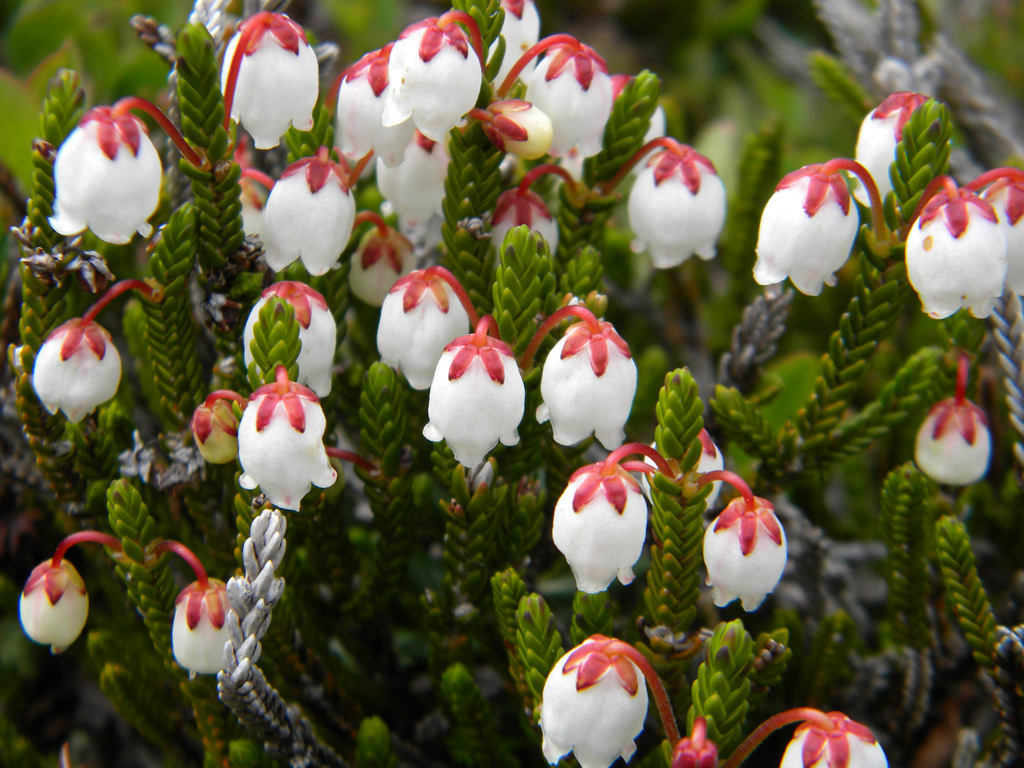Cassiope mertensiana of the Ericaceae is, of course, an alpine species of western North America. It is found in open forests, meadows, rocky slopes, heathlands and tundra. White mountain-heather is a mat-forming dwarf species with opposite evergreen leaves. The white solitary flowers are bell-shaped and held upon a bending red stalk.
Source
Source
Habitat & Range
As its name suggests, white mountain-heather is found in open habitats in alpine and subalpine environments, coastally from Alaska to California, and inland across BC, western Alberta, Washington, Oregon, and Montana.
Similar Species
Club-moss mountain-heather is very similar to white mountain-heather, except that it is smaller, with stem diameters of around 2mm, compared to 4mm in white mountain-heather. This species is more common on Haida Gwaii.
Alaskan, pink, and yellow mountain-heather all have similar flowers to white mountain-heather, but their leaves are more needle-like. Crowberry is another species that looks very similar to these three species, though it has much less flashy flowers. The needle-like leaves of these four species can be seen on the left in the photo above.
Human Uses
White mountain-heather can be used to produce a golden-brown dye. It has also been used by the Nlaka'pamux (Thompson) First Nations to treat tuberculosis and spitting up blood.
Intriguing Info
White mountain-heather is a very slow-growing species, and plants may be up to 20 years old.
Source
As its name suggests, white mountain-heather is found in open habitats in alpine and subalpine environments, coastally from Alaska to California, and inland across BC, western Alberta, Washington, Oregon, and Montana.
Similar Species
Club-moss mountain-heather is very similar to white mountain-heather, except that it is smaller, with stem diameters of around 2mm, compared to 4mm in white mountain-heather. This species is more common on Haida Gwaii.
Alaskan, pink, and yellow mountain-heather all have similar flowers to white mountain-heather, but their leaves are more needle-like. Crowberry is another species that looks very similar to these three species, though it has much less flashy flowers. The needle-like leaves of these four species can be seen on the left in the photo above.
Human Uses
White mountain-heather can be used to produce a golden-brown dye. It has also been used by the Nlaka'pamux (Thompson) First Nations to treat tuberculosis and spitting up blood.
Intriguing Info
White mountain-heather is a very slow-growing species, and plants may be up to 20 years old.
Source






